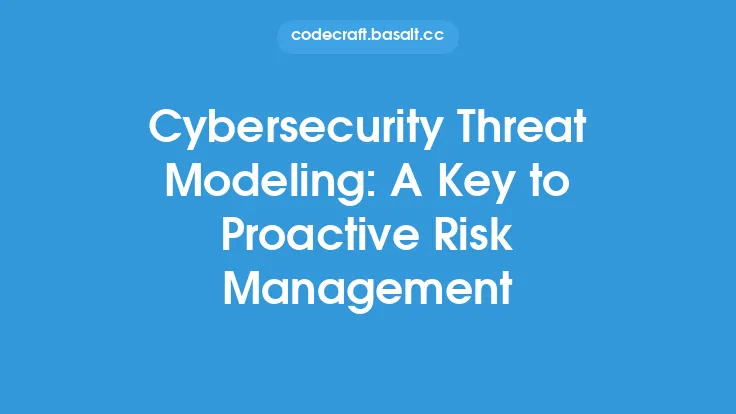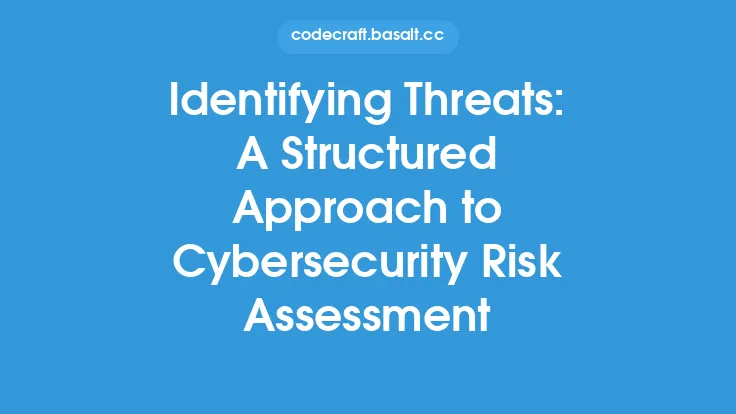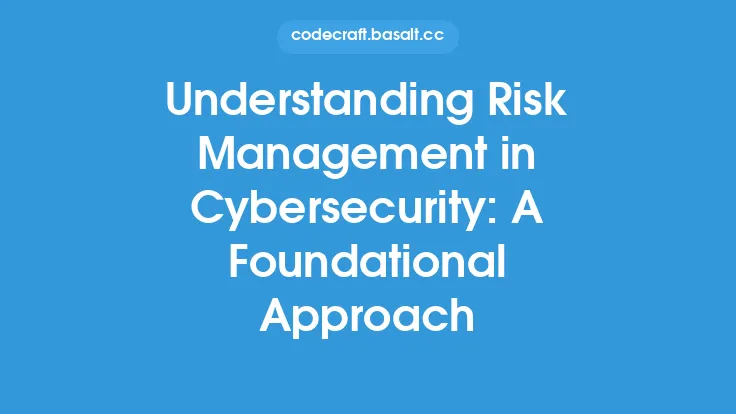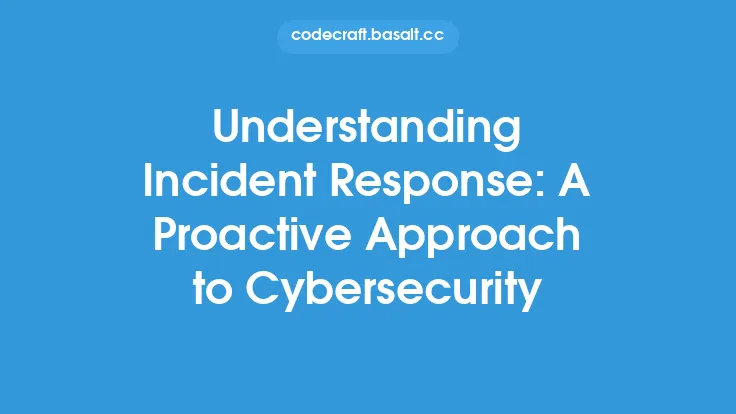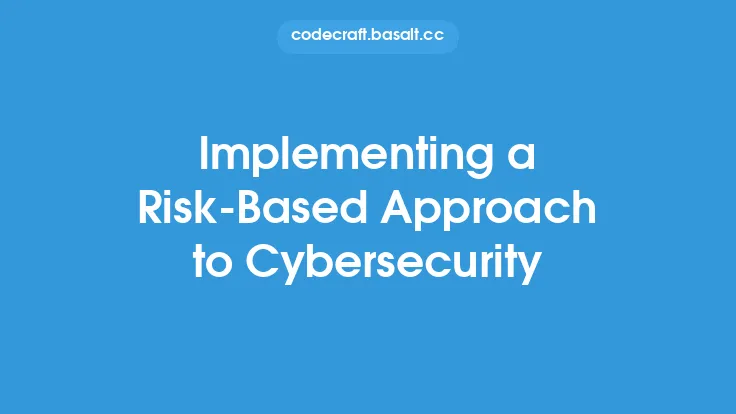Threat modeling is a crucial component of a comprehensive cybersecurity strategy, allowing organizations to proactively identify, analyze, and mitigate potential security threats. At its core, threat modeling involves a systematic and structured approach to understanding the various threats that an organization may face, as well as the potential vulnerabilities that could be exploited by attackers. By adopting a threat modeling approach, organizations can better protect their assets, reduce the risk of security breaches, and improve their overall cybersecurity posture.
What is Threat Modeling?
Threat modeling is a methodology used to identify, analyze, and prioritize potential security threats to an organization's assets, such as data, systems, and networks. It involves a comprehensive review of the organization's security posture, including its people, processes, and technology, to identify potential vulnerabilities and weaknesses that could be exploited by attackers. The goal of threat modeling is to provide a proactive and structured approach to cybersecurity risk management, allowing organizations to anticipate and mitigate potential security threats before they occur.
Key Components of Threat Modeling
Effective threat modeling involves several key components, including asset identification, threat identification, vulnerability analysis, and risk assessment. Asset identification involves identifying the organization's critical assets, such as data, systems, and networks, that need to be protected. Threat identification involves identifying the potential threats to these assets, including malicious actors, such as hackers and cyber terrorists, as well as non-malicious threats, such as natural disasters and system failures. Vulnerability analysis involves identifying the potential vulnerabilities and weaknesses in the organization's security posture that could be exploited by attackers. Risk assessment involves evaluating the likelihood and potential impact of each identified threat, as well as the effectiveness of existing security controls in mitigating these threats.
Benefits of Threat Modeling
Threat modeling offers several benefits to organizations, including improved cybersecurity posture, reduced risk of security breaches, and enhanced compliance with regulatory requirements. By adopting a threat modeling approach, organizations can proactively identify and mitigate potential security threats, reducing the risk of security breaches and the associated costs and consequences. Threat modeling also helps organizations to prioritize their security investments, ensuring that limited resources are focused on the most critical security threats and vulnerabilities. Additionally, threat modeling can help organizations to demonstrate compliance with regulatory requirements, such as HIPAA and PCI-DSS, by providing a structured and systematic approach to cybersecurity risk management.
Threat Modeling Process
The threat modeling process typically involves several steps, including asset identification, threat identification, vulnerability analysis, risk assessment, and mitigation. The first step, asset identification, involves identifying the organization's critical assets that need to be protected. The second step, threat identification, involves identifying the potential threats to these assets, including malicious actors and non-malicious threats. The third step, vulnerability analysis, involves identifying the potential vulnerabilities and weaknesses in the organization's security posture that could be exploited by attackers. The fourth step, risk assessment, involves evaluating the likelihood and potential impact of each identified threat, as well as the effectiveness of existing security controls in mitigating these threats. The final step, mitigation, involves implementing security controls and countermeasures to mitigate the identified threats and vulnerabilities.
Threat Modeling Techniques
Several threat modeling techniques are available, including attack trees, threat graphs, and misuse cases. Attack trees involve creating a visual representation of the potential attack paths that an attacker could take to exploit a vulnerability. Threat graphs involve creating a visual representation of the potential threats to an organization's assets, including the relationships between these threats. Misuse cases involve identifying the potential ways in which an attacker could misuse an organization's assets, such as data or systems. These techniques can help organizations to identify and analyze potential security threats, as well as to prioritize their security investments.
Common Threat Modeling Mistakes
Several common mistakes can be made when implementing threat modeling, including inadequate asset identification, incomplete threat identification, and ineffective risk assessment. Inadequate asset identification can lead to critical assets being overlooked, leaving them vulnerable to attack. Incomplete threat identification can lead to potential threats being missed, allowing attackers to exploit these vulnerabilities. Ineffective risk assessment can lead to inadequate mitigation strategies, leaving the organization vulnerable to attack. To avoid these mistakes, organizations should ensure that they have a comprehensive and systematic approach to threat modeling, including adequate asset identification, complete threat identification, and effective risk assessment.
Best Practices for Threat Modeling
Several best practices are available for threat modeling, including adopting a structured and systematic approach, using threat modeling techniques, and continuously monitoring and updating the threat model. Adopting a structured and systematic approach to threat modeling can help organizations to ensure that they have a comprehensive and effective threat modeling process in place. Using threat modeling techniques, such as attack trees and threat graphs, can help organizations to identify and analyze potential security threats. Continuously monitoring and updating the threat model can help organizations to stay ahead of emerging threats and vulnerabilities, ensuring that their security posture remains effective and up-to-date.
Conclusion
Threat modeling is a critical component of a comprehensive cybersecurity strategy, allowing organizations to proactively identify, analyze, and mitigate potential security threats. By adopting a threat modeling approach, organizations can improve their cybersecurity posture, reduce the risk of security breaches, and enhance compliance with regulatory requirements. Effective threat modeling involves several key components, including asset identification, threat identification, vulnerability analysis, and risk assessment. By following best practices and avoiding common mistakes, organizations can ensure that they have a comprehensive and effective threat modeling process in place, helping to protect their assets and reduce the risk of security breaches.

